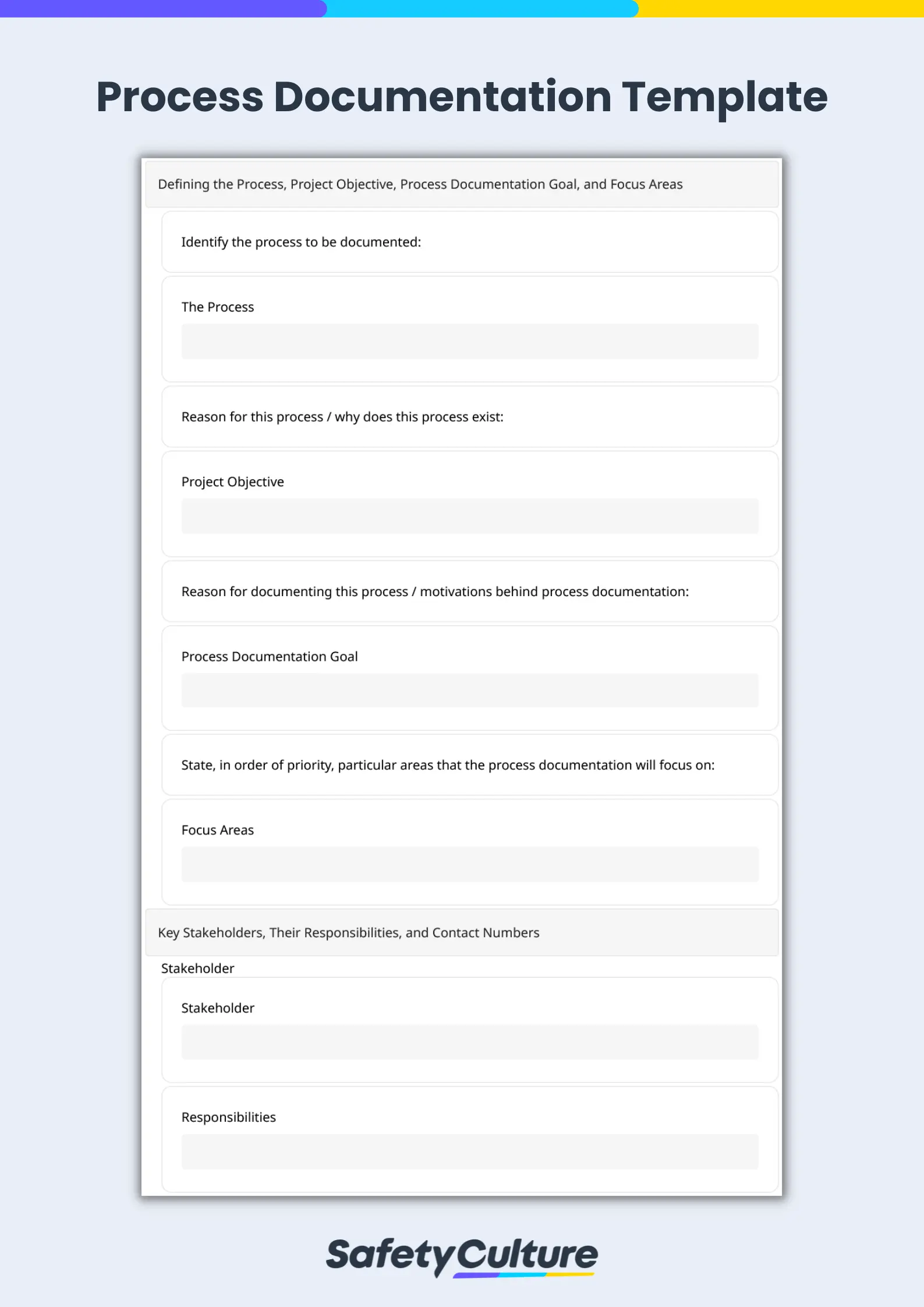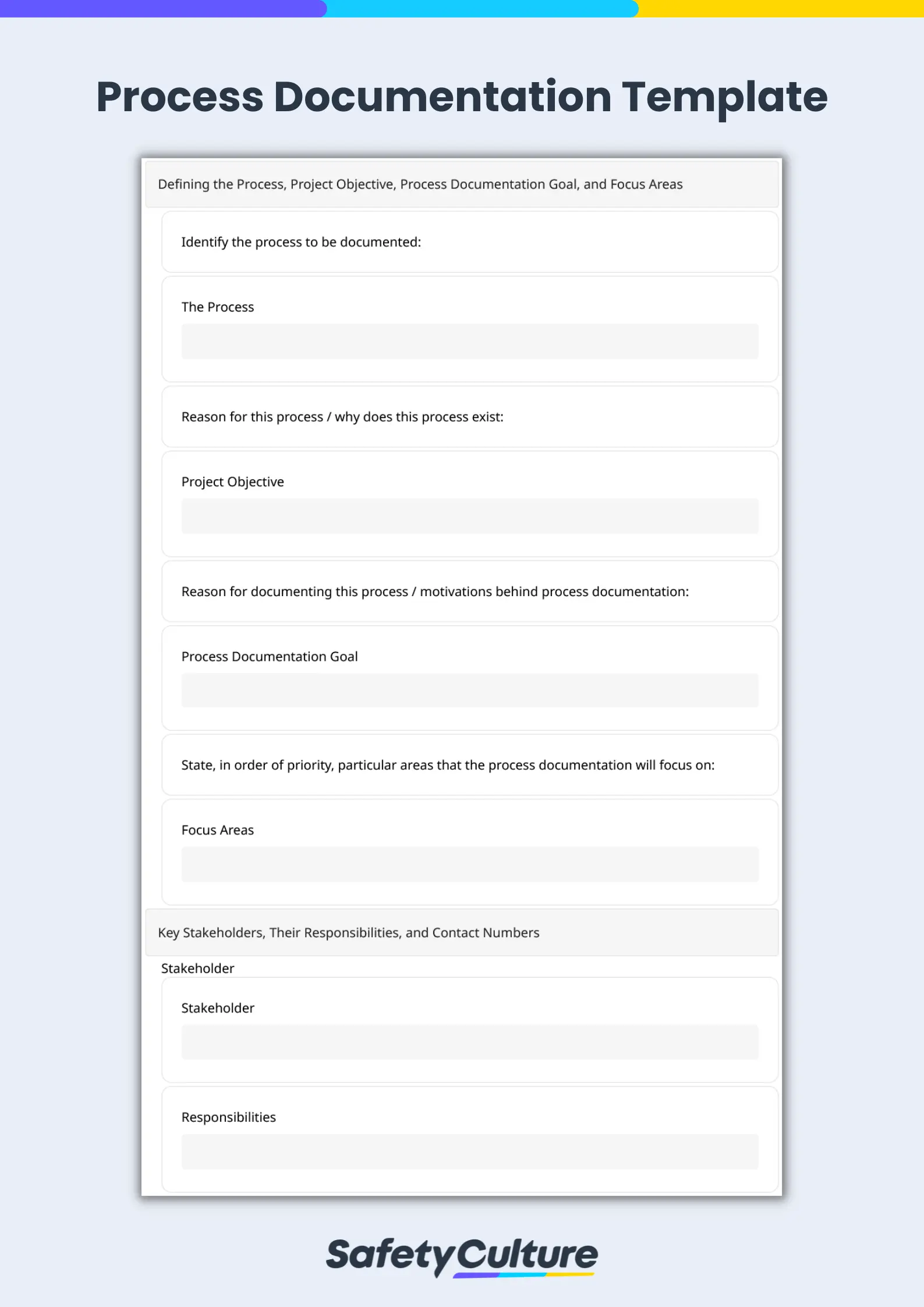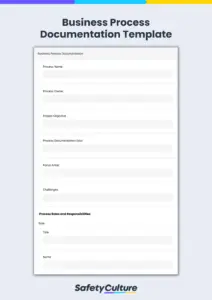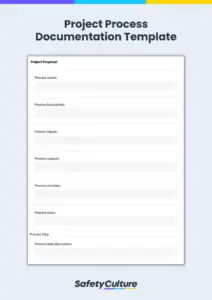What is a Process Documentation Template?
A process documentation template is a tool that helps managers document processes more efficiently. With the pre-existing framework of a process documentation template, managers need only fill out the required fields to document all kinds of processes cohesively. Using process documentation templates, managers can standardize and optimize processes effortlessly.
3 Process Documentation Templates You Should Check Out
Below are previews and descriptions of process documentation templates that you can download, use, and print as PDFs.
Process Documentation Template
The process documentation template, which is also the featured template, is ideal for beginners or those who aren’t yet that familiar with process documentation. Managers can learn more about what is meant by process documentation in this guide.
| What’s included in the process documentation template? | |
|
|
Business Process Documentation Template
The business process documentation template is ideal for managers of businesses that need to document a specific business process. You can also duplicate the template if you want to record another business process. Doing this ensures that process documentation for your business is organized and makes getting important information on a business process much easier.
Project Process Documentation Template
The project process documentation template is ideal for professionals in project-based businesses and freelancers. The template contains the following sections for each of the 5 process groups in project management:
| Initiating | Planning | Execution | Monitoring | Closing |
| Analysis of Business Needs and Requirements | Project Methodology | Allocation and Management of Human Resources | Ongoing Project Activities | Contract Closure |
| Review of Current Operations | Time, Cost, and Resources | Allocation and Management of Material Resources | Project Variables | Project Close |
| Project Proposal | Quality Assurance | Allocation and Management of Financial Resources | Corrective Actions | Post Implementation Review |
| Product Breakdown Structure | Risk Management | Change Control | Files Archival | |
| Work Breakdown Structure | Permits and Approval | |||
| Financial Analysis of Costs and Benefits | ||||
| Stakeholder Analysis |
Typical Features of a Process Documentation Template
A process documentation template should have these basic elements:
- Process Boundaries – describes when the process starts and when the process ends
- Process Activities – an overview of what is included in the scope of the process
- Process Inputs – identifies the triggers and requirements for the process to start
- Process Outputs – identifies the expected outcome or result of the process
- Process Steps – set of instructions for how to execute the process from start to finish
- Process Exceptions – explains what to do in case of deviations from the process steps
- Revision Schedule – includes date of review and what needs to be done before revision
- Key Stakeholders – their role in the process and a list of their responsibilities
How to Use Process Documentation Templates
Below is a guide on the best ways to use process documentation templates based on the process documentation goal or purpose:
If you want to document an existing process:
- Secure the involvement of employees who execute the process repeatedly or are experts in the process.
- Devote time to interviewing these employees on how they execute the process and getting as many details as possible.
- Observe employees as they execute the process and note any differences between what employees said in their interviews and how they actually do it.
If you want to document a new process:
- Finish developing the process details before you begin process documentation.
- Ensure that everyone who was involved in process development also participates in process documentation.
- Add any changes to the process upon first implementation, but do not delete the initial documentation.
If you want to improve an existing process:
- Collect feedback from employees who have different knowledge and skill levels when it comes to executing the process (e.g., first-timers, verified experts, and even those with medium or average proficiency).
- Identify the struggles that each set of employees have with the process and also note how many employees are first-timers, etc.
- Modify the process to address the struggles of the employees that make up the biggest percentage of your business.
Whether documenting new, existing, or changes in an existing process, getting employees actively involved in documentation can help not only in the efficient documentation of processes but also in their effective implementation.





